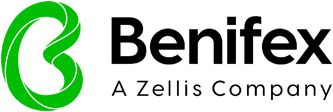Build experiences that drive strategic outcomes
21.08.25
Ross Spearman, Chief Experience Officer, Benifex
We’re in a new era for employee experience. What was once about process and compliance is now about outcomes. And that shift — from “what do we offer?” to “what impact are we trying to achieve?” — changes everything.
For years, benefits platforms were seen as admin tools: systems to house content, facilitate transactions, and meet obligations. But expectations have moved on. Employees want experiences that are personal, helpful, and relevant. Employers want to see measurable return – on wellbeing, engagement, retention, and performance. That’s why experience design has to be rooted in outcomes.
The diversity of today’s workforce makes this more important — and more complex — than ever. Traditional assumptions no longer hold because not every employee at the start of their career wants help with housing and not every employee further into theirs is focused on retirement. Needs now vary more by mindset, life moment, and individual circumstance than by age or generation.
That means personalization can’t just be cosmetic (we’ve been able to say “Hello ‘Name’” for quite some time now!). It must be contextual and responsive to real-world needs. And it must be powered by technology that can make sense of complex data, act in real time, and deliver intelligent guidance.
The best platforms today are moving from content libraries to outcome engines. They don’t just offer benefits. They help employees solve problems.
Got a toothache? You shouldn’t need to read three policies to figure out what to do. You should be able to ask a question — and get a clear, personalized answer: dental insurance, a healthcare cash plan, or reimbursement options, based on your eligibility and usage.
The best, AI native platforms can now enable an outcome-driven approach that gets to value much earlier… The platform becomes a place of interaction and guidance, even before the employee needs the benefit — rather than just being somewhere they just go to claim.
For HR and Reward teams, this shift is equally powerful. Data is no longer just about reporting what happened. It’s about predicting needs and prompting action. If engagement with mental health support increases in one region, the platform should flag it and suggest a next step. If uptake is low in a certain demographic, the system should recommend targeted nudges or redesign.
That’s more than just measurement. That’s enablement.
Of course, platforms still need to be well organized and designed. But the real opportunity is in interpretation. AI becomes the bridge between accessible data and actionable insight. That’s game-changing – especially when employees are overwhelmed with choices and HR teams are navigating an ever-growing remit.
Today, the platform often comes into play at the end of a decision for employees: “I’ve already chosen to see a dentist, now how do I claim?” By reversing the value chain, we can bring the platform right to the start of the journey: “I have a problem, what are my best options?” This brings the technology, and the employee’s decision-making, earlier in the value chain.
The future of employee experience is not about doing more. It’s about doing what matters – and ensuring every decision, every data point, and every design choice leads to the outcomes that employees value and employers need. Because the goal isn’t uptake for uptake’s sake; it’s impact.
Read all expert takeaways from the Benifex Forum here.
